#Gaziantep Archeology Museum
Video




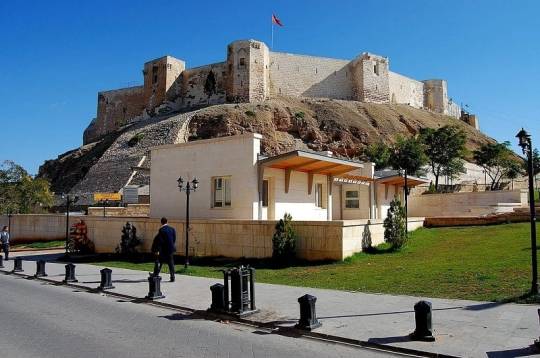

Ancient Gaziantep Castle Used by Romans and Byzantines Destroyed in Turkey Earthquake
An ancient castle in Turkey was one of the historic monuments damaged when major earthquakes hit the country and neighboring Syria, killing more than 2,000 people on Monday. Images show parts of the Gaziantep Castle, which was first built in the 2nd and 3rd centuries AD, during the Roman Empire, crumbling after the earthquake.
The 2,000-year-old castle is located in the Gaziantep region, about 80 miles south of the epicenter of one of the quakes in Kahramanmaras Province.
The castle, an archeological site, sits near the Gaziantep Archeology Museum, which includes works of the Late Hittite and Roman Periods during which the castle was built.
While there is no definitive information about when the castle was fist built, it was founded on top of an earthen mound that dates back some 6,000 years, to when an ancient city called Theban occupied the space.
It is believed to have been constructed as a watchtower during the Roman period between, the 2nd and 4th centuries AD. However, it was built up even more during the 5th century AD during the reign of Byzantine Emperor Justinianus, who was known as the "Architect of Castles."
The Ottomans repaired the castle over time, but it got a second full overhaul by Egyptian Sultan Qaitbay in 1481. There are 12 towers on the castle and the two towers near the main gate were rebuilt in 1557 by Suleiman the Magnificent during the Ottoman Empire.
By Caitlin O'Kane.
#Ancient Gaziantep Castle Used by Romans and Byzantines Destroyed in Turkey Earthquake#Gaziantep Castle#Gaziantep Archeology Museum#Byzantine Emperor Justinianus#Architect of Castles#Suleiman the Magnificent#archeology#archeolgst#ancient artifacts#history#history news#ancient history#ancient culture#ancient civil#roman empire#roman history#ottoman empire#byzantine empire#earthquake
104 notes
·
View notes
Photo
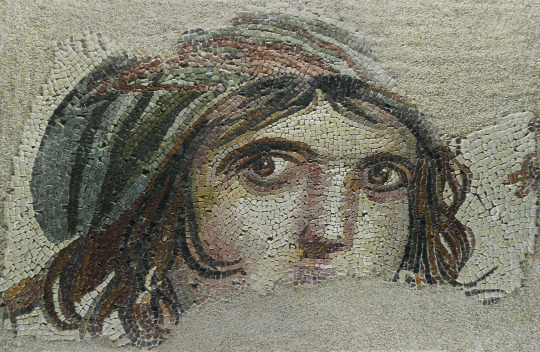
Mosaic "The Gypsy Girl" (III century) from the ancient Roman city of Zeugma, discovery in late 1998.
Gaziantep Archeology Museum, in Türkiye.
Author: Durova /CC BY-SA 3.0 via Wikimedia Commons
Zeugma was part of the Roman province of Syria Euphratensis. It got its name from the boat bridge or zeugma, which spanned the Euphrates River.
151 notes
·
View notes
Text
Bible discovery turkey

#BIBLE DISCOVERY TURKEY SKIN#
#BIBLE DISCOVERY TURKEY SOFTWARE#
The bible is reportedly damaged, but the writings in the old Assyrian language can be still noticed on the crumbled pages. The origins of the bible are still unknown. Bible Linked to the Gospel of Barnabas held by the Turkish. The Christian Bible has two sections, the Old Testament, which is the original Hebrew Bible and sacred texts of the Jewish faith, written between 1200 and 176 BC, while The New Testament books were written in the first century AD by Christians. Researcher lists through 1,000-year-old Bible, written in the old Assyriac language and illustrated with religious motifs made of gold leafs, in a video posted on October 28, 2015. The Bible was found in Turkey in 2000 written in a language that was mostly spoken 2000 years ago. Three people, whose names were not revealed, were taken into custody and are being questioned by the police. Appendix I: A list of all Turkish Bibles or Bible portions in strict chronological order but. It allegedly dates back to the time of Maryam (Virgin Mary), the mother of Jesus Christ (Prophet Isa in Islam) and is worth a million dollars. History of the Koran in Turkish translation: A Brief Excursus.
#BIBLE DISCOVERY TURKEY SKIN#
In the operation conducted by Turkey’s Anti-Smuggling and Organized Crime Branch in the southern province of Gaziantep, units discovered the Bible written in Hebrew and on the skin of a gazelle. The Bible had reportedly been brought into the country following the looting of a museum in Syria’s Aleppo. *For the background story of the Apostle Philip, who was crucified upside down at Hierapolis, see the article, “ Conversion, Crucifixion and Celebration,” by lead excavator Francesco D’Andria in the July/August 2011 issue of Biblical Archeology Review.ISTANBUL: Turkish police made a shocking discovery as they were tipped that an ancient Hebrew Bible worth a million dollars was put up for sale on the black market. Philip Church to this new church in the fifth century, during the Byzantine era.” D’Andria said the excavation of the tomb will begin in the near future. “With close examination, we determined that the grave had been moved from its previous location in the St. A Dutch ambassador at the Sultans court persuaded a Polish slave there known as Ali Bey to translate the Scriptures into Turkish. “As we were cleaning out the new church we discovered a month ago, we finally found the grave,” said D’Andria. Last month, however, D’Andria and his team located a smaller church less than 150 feet away from the martyrium that appears to contain the grave of the apostle. I will recommend it for any serious bible student. And you can purchase an enlarged version that is suitable for studying the Bible.
#BIBLE DISCOVERY TURKEY SOFTWARE#
According to excavator Francesco D’Andria, Philip’s tomb has traditionally been associated with the martyrium church built at the site, * though no evidence of the ancient burial was ever found. The software provides several innovations for the effective study of the Bible The Bible-Discovery program is freeware. Philip, one of Jesus’ 12 apostles.Italian archaeologists working at the site of Hierapolis in southwestern Turkey believe they have discovered the tomb of St. FOLLOWERS OF CHRISTAIN RELIGION ARE FACING INTIMIDATIONThe Pope Roman is confused due to finding a Bible that Jesus reported the coming of prophet Muhammad (. Italian archaeologists working at the site of Hierapolis in southwestern Turkey believe they have discovered the tomb of St.

0 notes
Text
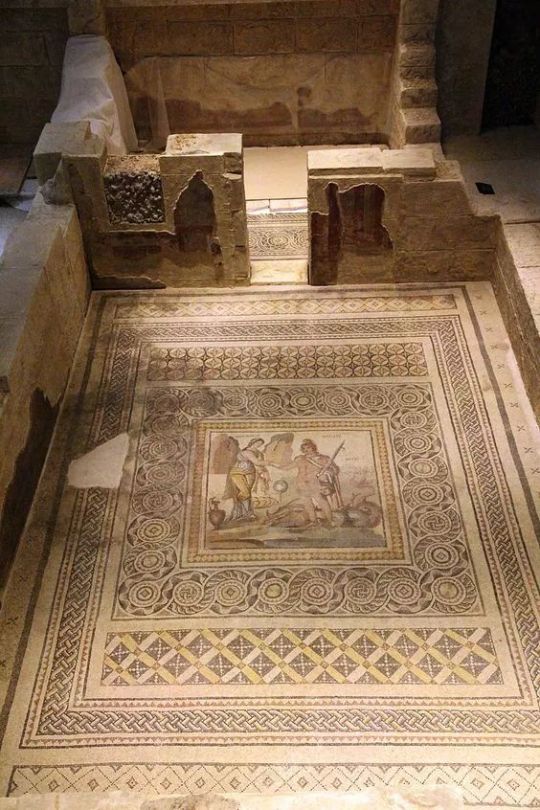
Zeugma Mosaic Museum, Gaziantep, TURKİYE, Perseus and Andromeda, mosaic from the "House of Poseidon" in Zeugma, 2./3. century.
#sanat tarihi#sanat#art#arkeoloji#kültür sanat#sanattarihi#arthistory#museum#art history#mimari#tarih#museums#müze#archeology#ancient#mitoloji#sanatsal#mythology#poseidon#gaziantep#mosaic
13 notes
·
View notes
Text
Archaeologists discovered seals and prints of a female administrator during their archaeological digs in the ancient city of Karkamış in southeastern Turkey’s Gaziantepprovince.
Karkamış was the most important administrative center in the region of the Hittite Empire, which ruled over Anatolia and Mesopotamia for centuries.
The findings were among dozens of clay seals belonging to the highest officials in a hierarchical order unearthed by an excavation team headed by Nicolo Marchetti, an archaeology professor at the University of Bologna in Italy, according to a statement by the Gaziantep metropolitan municipality.
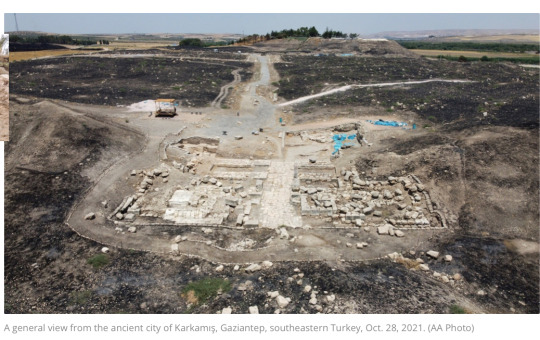
It was determined that two-thirds of the Anatolian hieroglyphic seal impressions belonged to a female administrator named Matiya from the period defined as the "Late Bronze Age."
The new discoveries are expected to shed light on the role of women in state governance during the Hittite Empire.
A bulla containing seal impressions belonging to Piradu, a prominent merchant of the Middle Assyrian Kingdom, was also found during the excavations, said the statement.
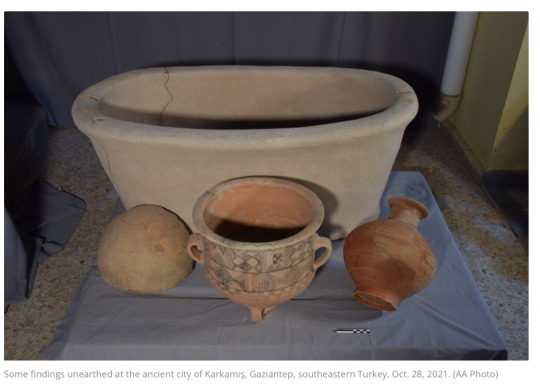
"The identity of Piradu will contribute to the analysis of Hittite-Assyrian relations, which deteriorated towards the collapse of the Hittite State and the chronology of some events of the period. In addition to these findings, in the Iron Age Cemetery just below the modern cemetery area, salvage excavations were carried out in order to prevent damage to the ancient tombs. Within two years, findings pointing to the cultural and traditional understandings of the 7th and 8th centuries B.C. were also found," it added.
Among these findings was a calcite tomb stele, or carved piece of stone, of a man named Sanai from King Kamani's reign in the first half of the 8th century B.C.
Gaziantep municipality also built an excavation house for newly unearthed archeological finds. The first cleaning, repair and protection work on the artifacts will be carried out in this house before they are sent to museums.
3 notes
·
View notes
Text
An Adventure Vacation in Turkey
Many people would raise eyebrows if a vacation off to Turkey is mentioned. But, to those that are into adventure vacation, a trip to Turkey, especially in Gaziantep spells as a fun-filled ADVENTURE! This is because the place, the Gaziantep province, can be found at the southeast part of the country—which most tourist have not stepped foot onto.
If you are planning to go on an adventure vacation in Turkey, Gaziantep is an ideal place because it boasts off a commercialized city wherein you can find the things that you are used to. However, despite its commercialization, you can still feel its rich culture that has been existent for the past 4,000 years. Originally known as 'Ayintap,' Gaziantep was a very important settlement area during the times and empires of the Roman, Ottoman Hittite, Persian, Babylonian, and Byzantine.
Standing at the crossroads of Southeastern Anatolia, Asia, Europe, and Mediterranean, Gaziantep is indeed a very interesting place to visit because it bears woven influences of many civilizations near the borders.
What is truly interesting about Gaziantep is the old city center where traditional house made of stone and have distinctive architectural features are still existent up to this time. This is also the place where you can find the great 6th-century Gaziantep Fortress as well as the Ravanda citadel surrounded with tiny palaces, mosques, watchtowers, a bath house and the Mehmet Gazali Tomb.
For those who are into archeology, it is nice to visit the Archaeological Museum where you can find a unique and rare collection of the province's Hittite and Neolithic empires. Roman situs judi online24jam terpercaya relics that are considered the finest in the whole of Turkey can also be found in Gaziantep. For more thrilling adventures, you can arrange day trips to Mount Nemrut where you can see a historic monolithic sculpture.
What to consider
If you conduct a simple research on the Gaziantep province, you will find out more interesting activities and places to visit. But, before you finally decide to choose the place as a destination for an adventure vacation, assess yourself first:
- are you prepared to witness a totally different culture from what you are used to? This is very important to consider because if you are prone to "culture shock" then, you would not enjoy the vacation. To prepare yourself for other cultures, make sure that you conduct a research first to have a general knowledge on the place.
This research should include the basic pieces of information a tourist should know about the place including means of getting there, places that offer accommodation and lodging, paper requirements, lifestyle of the people living in there, food available for you and what are your options, as well as the clothes that you should wear. (Remember, Turkey is a Muslim country so people are stricter when it comes to dress code especially to women.)
- how much is your budget? This should also be settled before you finalize your adventure trip. To know how much you will be spending in going and staying in Gaziantep, inquire from travel agencies that handle and arrange visits to the place. If the cost would fit your budget well, then it is better to have the travel agency arrange everything for you.
But if it costs too much and you would still want to push though, start your research by visiting sites in the Internet that offer information on Gaziantep. Although it would cost some of your time, it would cost you lesser amount of money.
1 note
·
View note
Text
Mosaics
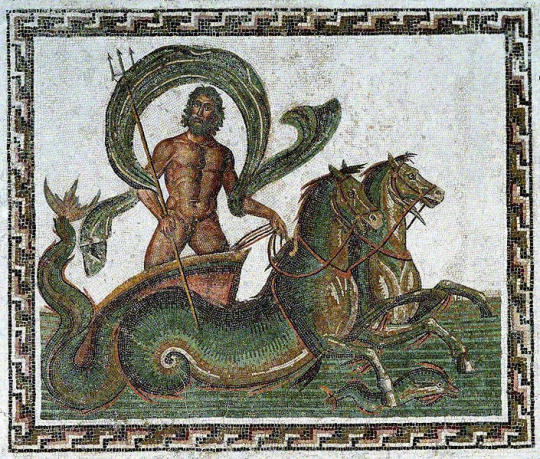
Triumph of Neptune standing on a chariot pulled by two sea horses. Mosaic of Hadrumetum (Sousse, Tunesia) of the mid-third century AD.
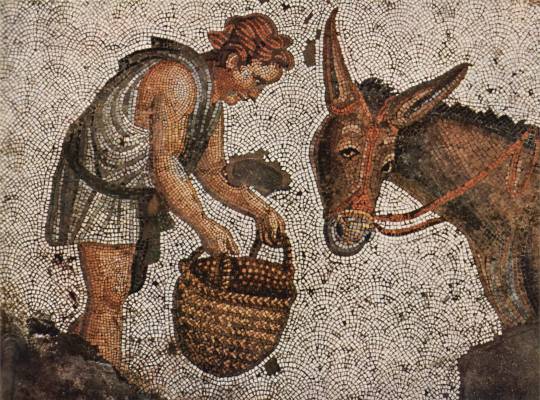
Child and donkey, 5th century AD mosaic, Great Palace Mosaic Museum, Istanbul, Turkey
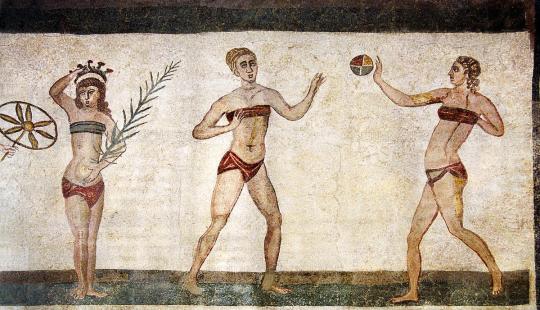
Girls in Bikini (subligaculum) playing Volleyball , 4th Century AD Mosaic, Piazza Armerina, Sizilien, Villa Romana del Casale

The “Gypsy Girl”, Roman Mosaic of Zeugma in Turkey, from Gaziantep Museum of Archeology
4 notes
·
View notes
Text
5 Reasons to visit Turkey at least once
Officially the Republic of Turkey is a transcontinental country. Turkey has a magnificent blend of food, beauty, beach,mountains, ancient structures, nature and sea. Here are some of the best reasons to visit Turkey:
1.Kitchen Culture
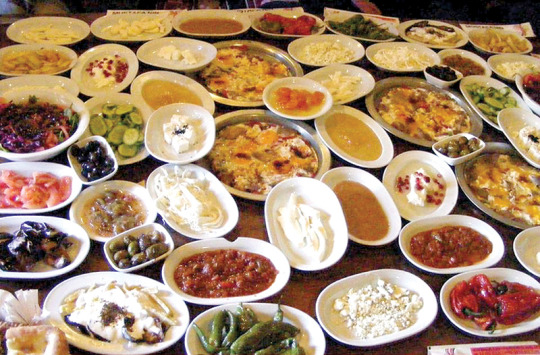
Turkey is a must-visit for all the foodies. Every region offers you its unique kitchen culture. Turkish cuisine has never-ending varieties. Baklava, kabab, fresh seafood and meze, a whole world of desserts, huge breakfast spreads, Ottoman classics, vegetable dishes, and much more. Turkey also has a lot of food shopping opportunities. Grand Bazaar and Spice Bazaar are the food shopping places for all you foodies out there.
2.Shopping

Turkey is one of the most amazing places to shop. It offers you a variety of open-air markets, chic boutiques, and covered Turkish bazaars. If you are a shopaholic it's a place where you will have lots of fun. Discover antiques, local crafts and even wandering street sellers. You can check out the blog,” Gifts to buy from Turkey” to know more about the products you can choose to buy.
3.Beaches
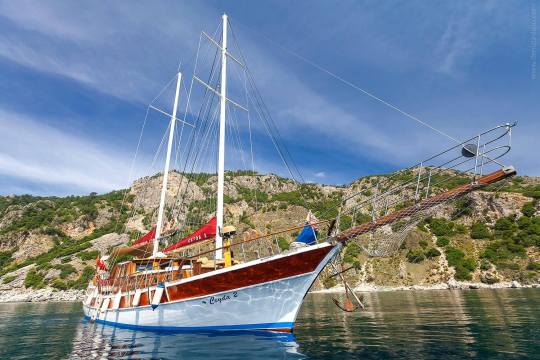
Who would not want to visit the beautiful beaches? Bodrum, Antalya, Izmir, and Fethiye have some of the best beaches in Turkey. They offer you a blend of variety ranging from coves to beach parties. Don’t miss to take the Blue Cruize to visit many beaches and the Mediterranean or Aegean Coast at one go.
4.Turkish Bath
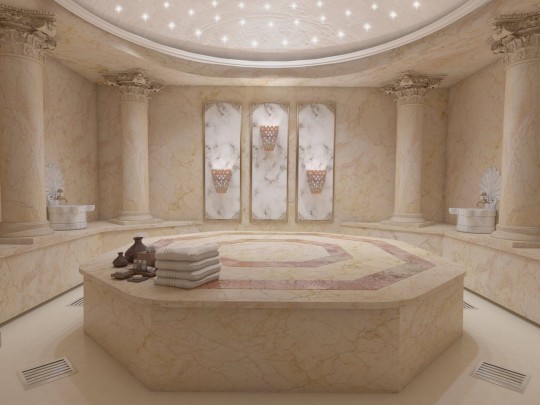
You would regret it if you go to Turkey and miss the hamam experience. They scrub, wash and then massage you in a cloud of soap foam. It’s a beautiful experience.
5.Archaeological sites and Museums
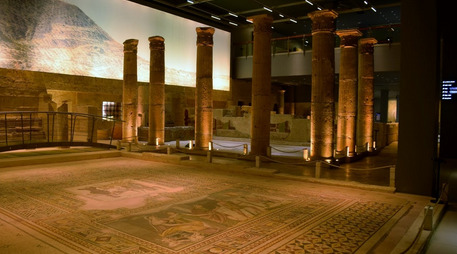
Turkey is famous for its archeological sites and museums. So all the inquisitive historians would love to check that out. Turkey has experienced a variety of civilizations, thus offering you variety starting from Istanbul’s palaces and mosques to the ruins of Ephesus to the underground cities of Cappadocia. Turkey is nothing less than a heaven from historical enthusiasts. Don't forget to visit the world's largest mosaic museum (Zeugma in Gaziantep) and Istanbul’s Ottoman palace museums.
The list is never-ending. This beauty will melt your heart in the best possible way. Turkey has something to offer for every person. Don’t waste the time and plan your trip asap. You can contact the best travel agency in Lebanon Satguru Travels to customize your itinerary and plan your trip to Turkey at the best price.
#Turkey tourism#Kitchen Culture#Shopping turkey#Beaches#Turkish Bath#Archaeological sites and Museums
0 notes
Photo
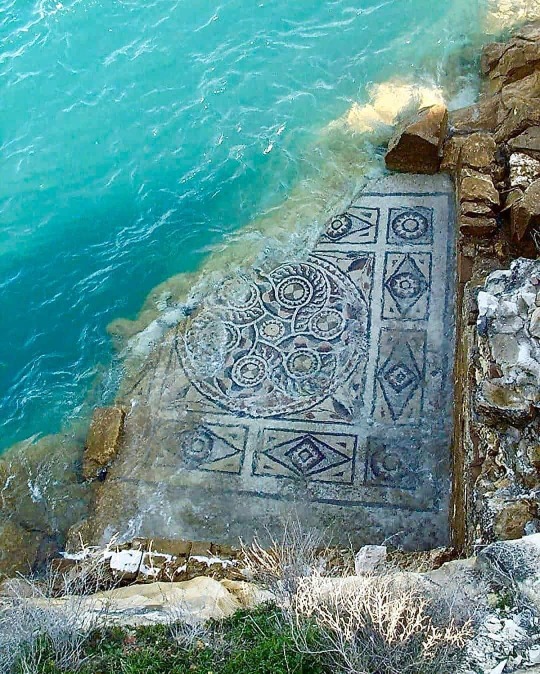
(English Version) Allah enlarges the sustenance (which He gives) to whichever of His servants He pleases; and He (similarly) grants by (strict) measure, (as He pleases): for Allah has full knowledge of all things. [Al-Ankaboot 29:62] ++++++++++++++++++++++++++++++ (Versi Bahasa) Allah melapangkan rezeki bagi orang yang Dia kehendaki di antara hamba-hamba-Nya dan Dia (pula) yang membatasi baginya. Sungguh, Allah Maha Mengetahui segala sesuatu. [Al-Ankaboot 29:62] . . . A Zeugma Mosaic rescued under water in Gaziantep Turkey. It is exhibited in Zeugma Mosaic Museum. ++++++++++++++++++++++++++++++ Mosaik Zeugma diselamatkan di bawah air di Gaziantep Turki. Dipamerkan di Museum Mosaik Zeugma.) . . The best photo by @alizeugma2006 . . #24April2020 #archeology #history #civilization #worldcivilization #worldheritage #nature #beautifulplaces #beautifulnature #art #artwork #naturephotography #naturephotographer #photograpy #photographer #phonetography #phonetographer #image #view #shoot #lifestyle #writing #writer #turkey (at Gaziantep Türkiye) https://www.instagram.com/p/B_XGj8sJa-E/?igshid=acvoq4dic60a
#24april2020#archeology#history#civilization#worldcivilization#worldheritage#nature#beautifulplaces#beautifulnature#art#artwork#naturephotography#naturephotographer#photograpy#photographer#phonetography#phonetographer#image#view#shoot#lifestyle#writing#writer#turkey
0 notes
Text
Visiting Hatay (Antakya) Turkey - Learn About the Best Foods and Sights (We Came for the Kunefe! )
Antakya, Hatay, Turkey
Turkey’s Hatay province juts out from southern Turkey like a peninsula. It’s sandwiched between the Mediterranean Sea to the west and Syria the east. Hatay was previously part of Syria and only became part of Turkey in 1939. Consequently, Arab culture has a strong presence in Hatay and influences the local culture, language, and cuisine. Hatay is home to a diverse mixture of faiths such as Orthodox Christians, Syriac Christians, Sunnis, and Alevis. The city of Antakya (a destination on the Silk Road historically called Antioch) is the multicultural cosmopolitan city where we based ourselves while in Hatay.
We arrived in Antakya after a few baklava-filled days in the gastronomic paradise of Gaziantep, Turkey. Our bus wound through the Nur Mountains until we sighted views of the coast. The bus continued south until reaching Antakya, not far from the Syrian border. The scenic ride was tainted by our unwilling inhalation of smoke from the bus driver’s and another man’s cigarettes. These men saw no issue in lighting up their cigarettes in the midst of transit, inside the confines of the regional bus (where the windows don’t open!). Gesturing that we didn’t care for the smoking, the bus attendant laughably sprayed some air-freshener down the bus aisle as the duo carried on smoking. At first, observing the exorbitant amount of smoking in Turkey was an amusing novelty but it’s become quite a nuisance. It’s proving hard to escape the second-hand smoke even though there was a public ban on smoking in 1997. Despite this irritation, we fell in love with historical Hatay. Hatay is loaded with diversity, history and some seriously delicious cuisine. Read on to learn about what to eat, see, and do in Hatay.
Don’t Miss These Foods in Antakya (Hatay)
Kunefe: What Dreams are Made of
With two months in Turkey under our belt we’d been eagerly anticipating our arrival in Hatay. We had just one thing on our minds, and one thing alone, the reason for our visit to this southern most region of Turkey; kunefe (alternate spellings; kanafeh,kunafeh, kunafa, knafeh, konafi). We’d been patiently waiting to try this dessert, even abstaining from trying elsewhere in Turkey. Hatay, we’d been told by locals, is where you go for kunefe. Just the sheer mention of kunefe brings a smile to locals faces and a glint to their eyes as they divulge their favorite place in town to try this sweet and cheesy treat.
Cinaralti Kunefe Yusuf Usta inside Antakya’s bazaar has the best kunefe in Antakya, Hatay. A bold statement I know, but before we visited this spot we had it verified by several locals and, upon tasting it, we can confirm; their kunefe is divine. At Cinaralti Kunefe Yusuf Usta the kunefe is cooked the good ol’ fashioned way, on coals over an open flame. To make kunefe strands of sweet filo dough called kadayif are layered with cheese and cooked until the cheese is melted. We observed the entire process as the workers masterfully piled on the ingredients, cooked the kunefe until the top was golden brown and then flipped the entire dish like a giant pancake. We were served the kunefe while it was still hot—stretchy strands of cheese followed our slice being served onto our plate from the large cooking pan like a cheesy slice of lasagna. Being simultaneously sweet, savory, crispy and buttery, kunefe is perfection in a pan. Holding out for this dessert was absolutely worth it. We even splurged for a side of ice cream - what’s a little more dairy in addition to the cheese-filled, butter-coated kunefe anyways?
Biberli Ekmek - Red Pepper Bread
On the note of food, another regional specialty to try is a red pepper paste flat bread called biberli ekmek. It’s hard to miss this Syrian-influenced bread as it’s available in stalls, street corners and bakeries everywhere in Antakya. We were lucky to spot this local bread fresh out of a tandoor. While ordering the spicy, flavorful flat bread to-go a woman passing by helped us translate to aide in our transaction. When departing she reached into her shopping bag and handed us some of her own recently purchased warm breakfast rolls. We will surely never starve in Turkey! To the dismay of our waistlines, the Turkish people continue to ensure we are well fed.
Rose Syrup Dessert & Other Hatay Culinary Specialities
While taking the public bus into Hatay’s Old Town two friendly teenage girls shyly pursued the opportunity to practice their English with us. Before we exited the bus they kindly insisted that we allow them to show us their home town. We agreed and they appointed themselves our tour guides for the morning. Following their lead we strolled through the twisted alleyways until we reached Kurtuluş Street. Actually, until we were on top of Kurtuluş Street which currently sits 9m (30ft) below ground. This ancient Roman road was at one time a popular shopping destination for people across the Middle East. It’s claim to fame is that it was the first street in the world to have street lighting. There are future plans to create underground tunnels to access this historical site.
Next our new friends lead to us a cafe in Old Town to try bici bici rose dessert. The milky dessert is served with fragrant homemade rose syrup and ice-cream. The highlighter pink confection is best enjoyed in the ivy covered tea garden of Tarihi Affan Kahvesi, a historical neighborhood cafe.
Other local culinary specialities to try in Hatay include:
Kekik salatasasi a zesty wild thyme salad served with onions and tomatoes
Cevizli biber a spicy red pepper paste meze dip made with crushed walnuts and olive oil
Oruk an oblong meat patty encased in a crispy fried bulgur shell.
What to Do in Antakya
Antakya’s Bazaar
In the Old Town section of Antakya you’ll find the local bazaar. With colorful spice stands and home-made soap venders the bazaar retains some of its old world charm. We purchased spicy Samandag red pepper flakes and laurel soap from a stall where the sales lady divulged that laurel soap is the reason for the Turkish women’s shiny hair. We got lost in the narrow pathways of the bazaar and stumbled upon a few shopkeepers enjoying cay (Turkish tea) in a quiet little corner of the bazaar. They smiled at us and, in typical Turkish fashion invited us to join them and share a tulip shaped glass of tea. They spoke with us using google translate while smiling largely. Our hearts were warmed by their tea and kindness. One of the women sent us on our way with a green herb she’d been pruning as we talked. She recommended we try it mixed into yogurt.
Hatay Archaeology Museum
Hatay was a part of ancient Mesopotamia, the cradle of civilization. The artifacts contained in Hatay’s Archeological Museum provide a glimpse into ancient life. Just a ten minute drive north of the city center, the museum is an impressive showcase of artifacts from the Paleolithic age through the present day (not to mention an assortment of 40,000 year old stone tools!). The museum houses a large collections of Roman and Byzantine era mosaics that were unearthed not too far from the museum. Give yourself at least two hours to properly explore this extensive museum.
Church of St. Peter
This church, caved into the side of a mountain is one of the world’s oldest Christian churches. Peter (and Paul) visited Antakya and is believed to be where he began preaching. Though the inside of the church was restored in the 20th century you can see some original elements that remain such as sections of mosaic on the floors. Dripping water near the alter is said to having healing properties. The Church of St. Peter is only 1.5km from Hatay’s Archeological Museum, so it’s possible to walk to one from the other and make a half day trip of both destinations.
Takeaway
Hatay is a culturally diverse city that stands out from the rest of Turkey. The Arabic influence is more pronounced in this beautiful region that other parts of the country-Don’t let its shared border with Syria worry you. If you have a favorite food or restaurant in Hatay that we did not mention please include it in the comments below.
Please remember to Pin this article if you enjoyed reading it.
#Visiting Antakya Hatay Turkey#Hatay Antakya Travel Blog#Hatay travel blog#eating kunefe in Hatay Antakya Turkey#the best kunefe in Antakya Hatay Turkey#where to find kunefe in Hatay Antakya#trying kunefe for the first time in Hatay Antakya#where to go in hatay antakya turkey#what to do in hatay antakya turkey#where to visit in antakya hatay turkey#specialty foods in Hatay#what foods to eat in Antakya#What foods to eat in hatay#visiting the bazaar in antakya hatay turkey#visiting the archaeology museum in hatay antakya turkey#Best Kunefe#Best Kanafeh in Hatay#Best Kanafa in Hatay#Best knafey in Hatay#Visiting Hatay#Antakya Turkey Travel Blog
1 note
·
View note
Link
OF THE MOSAIC, mostly the eyes remain, framed by locks of chestnut hair. On one ear, a hoop gold earring; on the head, a green-gray scarf. There is a flush of red where the hair touches the cheek, deep color rising slowly to the cheekbones. She looks startled; the silent shock of a deer locked in place. Her look turns inward, fear sliding to thoughtful resignation and perhaps fatigue. “She,” I say, though the museum sign explains that there is still discussion about the mosaic’s gender. Some think this is the face of Alexander the Great; others, the earth goddess Gaia.
Many diminutive names were given her at the time of her discovery — “The Zeugma Girl,” “Our Girl” — even though these are doubtless the eyes of an adult. The name that stuck was “Gypsy Girl” (Çingene Kızı), and whatever debate there was about the face’s gender, age, or origin was mostly forgotten with this new mythology. In the 18 years since she has been displayed in Gaziantep’s Zeugma Mosaic Museum, close to Turkey’s Syrian border, the “Gypsy Girl” has become a symbol of the city and of Turkey’s classical heritage. Her eyes are reproduced on countless posters and souvenirs, looking on through millennia.
¤
The Gypsy Girl mosaic was discovered beneath a fallen column in 1998 during rescue excavations of the second-century Roman settlement, Zeugma, on the banks of the Euphrates River, when the site was about to be flooded with the construction of the Birecik Dam in southeastern Turkey. The mosaic was one of many covering the floor of a Roman villa’s triclinium, the chamber reserved for hosting, with its reclining chairs arranged around the dinner table, lavishly decorated with motifs of flora and fauna and themes of entertainment. The colors of the mosaics’ glass and rock echo the landscape of the Euphrates — the muted yellows and greens; silty hills of oak and ash spreading around the shimmering blues. At the time of the excavations, most of the floor mosaics had disappeared. The villa was looted by black market smugglers in the early 1960s, like many other ancient sites in Turkey. Individual pictures were broken up with pickaxes and hammers, shattering the colorful geometric decorations surrounding them. By chance, the looters had overlooked the Gypsy Girl, hidden beneath a column.
Soon thereafter, 12 of the stolen mosaics resurfaced in New York at the Peter Marks Works of Art Gallery. Among them were depictions of birds, satyrs, theater masks, and the face of a woman with a sideways glance, much like the Gypsy Girl. In 1965, Marks sold the Zeugma mosaics to Bowling Green State University in Ohio for $35,000, with scanty paperwork showing the origin of the pieces as the city of Antioch, a short distance from Zeugma. He also provided pencil sketches showing how the mosaics would have looked in their original place.
Antioch, modern-day Antakya, had been excavated extensively in the 1930s by a group of archeologists headed by Princeton University, with hopes of discovering the city’s ancient Christian sites. The expedition uncovered 300 Roman mosaic floors, 40 of which were taken to the United States alongside thousands of coins and smaller artifacts, which were distributed among universities, galleries, and museums. When Antioch became part of the Turkish Republic in 1939, with strict prohibitions against exporting antiquities, the mission was hastily wrapped up and the last excavated artifacts shipped to New Jersey.
Black-and-white photographs from the Antioch excavation show villagers working deep in the trenches, hauling colossal stones, cleaning baskets of daily finds. In one photograph, two young men, wearing fezes, shalvars, and white cotton shorts, chip away at a mosaic of fish. In another, an old man with a long beard and turban sits hugging his knees in the shade of an olive tree. Behind him is the giant floor mosaic of a striding lion amid a sea of flowers. The camera’s focus is on the art, lavish, exquisite, while the modest people surrounding it appear small, even insignificant.
¤
In 2011, 47 years after their purchase, the Zeugma mosaics were cleaned, restored, and installed under protective glass on the floor of the new Wolfe Center for the Arts at Bowling Green State University. On the occasion of the mosaics’ inauguration, art historians Stephanie Langin-Hooper and Rebecca Molholt began a collaboration on the works which were still assumed to have come from Antioch. But Molholt suspected that the individually broken mosaics, most of them 12 by 12 inches, pointed clearly to smuggling. It did not take her long to realize that the works were not from Antioch, as the university’s purchase records indicated, and that the pencil sketch provided by Peter Marks were “wishful thinking.” (Since his sale to Bowling Green, Marks had also published an article, “The Ethics of Art Dealing,” in the International Journal of Cultural Property, about difficulties faced by collectors and dealers given the new legal standards imposed on the purchase of artworks.) Scanning pictures of other nearby archeological sites, Molholt noticed that the color palette of the Bowling Green mosaics exactly matched those from the Zeugma excavation; one of the decorative fillings was a softly shaded lotus flower, identical to a border frame in the Gaziantep museum. It took Molholt two weeks to conclude that the mosaics were taken from the same villa as the Gypsy Girl.
In the widely publicized event of the mosaics’ rediscovery, the Turkish media expressed indignation that the works were stepped on daily (even though they were under glass) and that they were displayed at the entrance of the art center as mere decoration. The newspapers might have found a better case for offense among the Antioch mosaics at Princeton, several of which were installed without protection in lobby entrances or building exteriors as recently as 2008. Since their arrival from Antioch, they’d cracked and faded, unprotected from the effects of snow and rain.
After seven years of negotiations between Bowling Green and the Turkish government, the 12 mosaics were shipped back to Gaziantep in December 2018. In her press-conference speech, Professor Langin-Hooper called the return a “triumph,” adding,
I use that word “triumph” deliberately, as it refers in Roman times to the celebratory display of looted artworks taken by conquest, paraded through the streets of Rome. Today, however, we have a modern triumph — a reverse triumph, if you will. The looted masterpieces get to go home.
¤
In animist art, there is a moment when putting in the eyes or the mouth of a sculpture separates the object from its maker, taking on a life of its own. The same is true of breaking apart, when a fragment takes on new meaning through all that it leaves open to the imagination. In the 18 years that she has been alone in a dimly lit room of the Zeugma Museum, the Gypsy Girl has taken on a different identity. No other mosaic in present-day Turkey has quite such a grip on the imagination, though there are many to choose from: ones that are bigger, fuller, or more easily accessed, such as the spectacular Deesis mosaic of Christ Pantocrator in Istanbul’s Hagia Sophia. Because of their relationship to the Gypsy Girl, the arrival of the 12 mosaics from Ohio was surrounded by a flurry of excitement, more than any other artwork that the Turkish government has actively sought to repatriate in the last decade, including those displayed at the The Met, the Louvre, and the Pergamon. The return was told as a tale of homecoming. “Our Gypsy Girl will finally be united with her family,” said Gaziantep’s mayor; the minister of Culture and Tourism that she would finally be united with her “sister,” meaning the sideways-glancing depiction of a Maenad, follower of Dionysus. The Maenad has vine leaves and grapes flowing out from her hair. She wears the same, golden earring as the Gypsy. But though her eyes are askance, they are mischievous and full of determination, unlike those of her sister’s.
¤
I visited the Zeugma Museum in May 2015. The previous day, I had been at Göbeklitepe, the world’s oldest temple dating to 10,000 BC, a period before human settlement. The day before that, I was at Mor Gabriel, the oldest surviving Syriac Orthodox monastery in the world, where Aramaic is still spoken. For several years, the monastery had been under threat of losing its lands to the area’s Kurdish population as well as to the Turkish treasury. On the day of my visit, a Muslim villager had brought her sick child to the monastery for blessing. Her face was intricately tattooed; her head scarf the same dusty shade of purple as the thistles poking thickly from the parched soil. I sat down in the courtyard to rest when a priest came up to me and asked, in English, from where I was visiting. When I told him that I was Turkish, he paused, then said kindly, “Don’t worry, it’s all right.”
History surfaced all around in blaring fragments, hacked away from the pieces that joined it together, without any apparent relevance or kinship to what was happening all around. On the day I arrived in Gaziantep, the al-Nusra Front had issued a declaration of war against Kurdish militia in Aleppo, barely a three-hour drive from the Zeugma Museum and the native town of my great-grandmother. In the car, the Syrian border blurred into crimson and ink at sunset, the white peaks of refugee tents stretching for kilometers in parallel to the road.
¤
In Greek, “zeugma” means bridge of boats, referring to those tied together to connect the two banks of the Euphrates. I learn this from a video about the Zeugma Mosaic Museum issued by the Ministry of Tourism. It is narrated by a young, enthusiastic man with an American accent. He adds, all too predictably, that the name of the ancient city is just like Turkey itself, a bridge, or better, a mosaic of civilizations.
¤
Part of the Gypsy Girl’s power is due to her lack of denomination. It might be less apparent, for example, to call the return of a Christ mosaic to Antioch a “homecoming,” even though St. Paul and St. Peter both lived and preached in the city and there founded the first church. Yet these histories, along with the Greek and early Roman ones are almost entirely absent from the Turkish national curriculum, which mostly follows the arrival of Turks from Central Asia. The history of Anatolia springs into existence with their appearance, stifling thousands of years of multiple, intertwining inhabitation. The ancient heritage of Turkey thus requires a double-vision. It is at once there and not there, boasted and ignored.
The Gypsy Girl, however, is nothing but eyes. No part of her makes her foreign or insists on her difference. She is whatever you would like her to be. Give her a familiar name, and she becomes one of us, whereas a “Gypsy” is rootless in her wandering, easily exotic, and malleable.
¤
A cliché about the Gypsy Girl is that she is “the Mona Lisa of Turkey.” Museum signs, newspaper articles, and online forums attempting to explain her importance invariably talk about her three-quarter look, the effect of which is that her eyes follow you everywhere. The explanation is intended to reveal the trick, to deliver the viewer from the grip of art with a rational explanation of why it moves us. What isn’t revealed with the technical description is the reason for our fascination with silent, mysterious women — from the Virgin Mary to the Mona Lisa, Botticelli’s Venus to the Gypsy Girl — why it is that the melancholy, abstract beauty of a woman, at once mature and girlish, knowing and silent, has such a hold on our imagination.
The Irish novelist Colm Tóibín writes:
It is as though her insistent and mysterious power arose precisely from her shadowy presence; it is as though the devotion to her grew from this very absence and silence. She could thus be re-created with greater force in the imagination of those who prayed to her and who sought her intercession.
Tóibín is referring to the Virgin Mary, in the afterword to his book The Testament of Mary, though he may as well be describing the Gypsy Girl. Perhaps the actual zeugma uniting civilizations across millennia and cultures is the allure of the silent woman, reproduced again and again in the history of art. These women cannot speak for themselves, because they exert no subjective selfhood in their silent gaze. There is nothing that distinguishes their true person; nothing challenging, or rebellious, to mark their unique standing. They are exotically Other — gypsy — because they are imagined and made by men and are the opposite of their makers’ subjective, embodied existence. Yet their Otherness is unthreatening: girl rather than woman. As such, they are easily possessed by the imagination and claimed as one’s own.
¤
From its very beginning, the story of the mosaics is a story of ownership: the lands of the Euphrates contested among the Romans, Persians, Byzantines, and Ottomans; the noble families whose lavish homes attest to their wealth; the looters and the dealers; the institutions who want to display the culture at their command. There is smugness in ownership, the wish to prove that what you own rightfully belongs to you: these are our lands, our discoveries, our religion and culture. These possessions represent us more than they represent you. “[I]t must be noted that the Turks themselves can claim little credit for their archeological treasures,” a Der Spiegel article explains. Turks only arrived in Anatolia in the 11th century and therefore have no relationship to what was there before them. The suggestion is that identity and belonging are fixed, that they cannot transform, nor can they embrace what is foreign. “When the new Muslim masters took over,” the article continues, “the region’s illustrious past faded into obscurity. The water-pipe-smoking caliphs were more concerned with pursuing their own interests.” Ownership asserts itself as a moral status in face of the immoral other, insisting that the indolent caliphs are not worthy of a noble Western heritage, because to own is to be superior. It is how a tribe stamps its mark upon another; a civilization retains legitimacy; patriarchy tightens its grip. The vanquished, dispossessed of their belongings, are buried under the names, stories, and moralities assigned to them by the new titleholders.
“We liked her so much that we decided to take her under our custody,” says archeologist Rifat Ergeç about the Gypsy Girl, at a panel on Gaziantep’s history. He is part of the team that discovered the mosaic in 1998 and is humorously recounting the story of her transformation from a buried fragment to the city’s symbol. He produces a national identity card he’s prepared for the newly adopted Gypsy Girl. The father’s name is “Turkey,” mother’s name “Anatolia.” Her place of birth is Zeugma, place of registration the Gaziantep museum.
As part of his joke, Ergeç has chosen to include the mosaic’s marital status as well. This section is marked when one turns 18, as single or married. At one time, though there was no legal framework to do so, registry officers would write “Virgin” on the identity cards of young women, laying their hands on what is most private. This, too, is ownership. It is what Ergeç has decided to put down for the startled, mosaic eyes. The eyes of our girl.
The newspaper article notes that his presentation is met with laughter and applause.
¤
Ayşegül Savaş is a writer based in Paris. Her first novel, Walking on the Ceiling, is published by Riverhead Books.
The post Whose Eyes Are These? appeared first on Los Angeles Review of Books.
from Los Angeles Review of Books http://bit.ly/2HB4NUx
0 notes
Text
Turkey to be seen the ancient city of 20 - #Antalya, #AssemblyArea, #Assos, #Denizli, #Ephesus, #Gobeklitepe, #Hattusa, #Herakleia, #Izmir, #Knidos, #Laodicea, #Magnesia, #Manisa, #Miletus, #Nicomedia, #Olympos, #Pergamon, #Sardis, #Troy, #Turkey, #UNESCOWorldHeritageList, #Xanthos, #Zeugma
New Post has been published on http://justforustravel.com/2017/10/08/turkey-to-be-seen-the-ancient-city-of-20/
Turkey to be seen the ancient city of 20
we can say that openly and proudly announced a very important point in terms of our country’s history and natural beauty. Throughout the country there are towns that sheds light on the unique beauty of the historical present. For instance, in Istanbul’s any place to go I guess if we’re digging in, something comes out of it, we’re in a country with that history degree of the ground. The ancient town is situated in one of the 78 full. The vast majority of them trade on the coast of the sea in ancient times in general, since it is generally found in the Aegean and Mediterranean regions. Even it would be time and money to set up jump on the bike and you’re going to do a country type of the ancient city. Surely will be a trip to remember.
the ancient city of Ephesus, Izmir
this ancient city is mentioned I’m sure when one of the first places that comes to mind. Ephesus, Izmir, Turkey’s is located in the town of Selcuk. Date B.C. 6000′ s goes up. Is important from the standpoint of Christianity. The Bible’s last name, and Hz. Jesus’s Deputy found one of the few cities where we were. Actually here should be evaluated according to 3 different times. These Neolithic, Hellenistic and Roman periods. But in general nowadays, a lot of people are artifacts of the Hellenistic and Roman periods. The ancient city of Ephesus, in fact, it is an ancient city with a large trade volume, but it started filling up with the silt brought Menderes River and the harbor declined. Port yaptirils or condition may not be prevented by the Emperor Hadrian for the cleaning work. Transportation is very easy. Izmir’s centre and from there go on the train from Selcuk below you will find very with the Van.
the ancient city of Ani, Kars
photo: kars.gov.tr
City, is located 42 km from Kars centre. The defence of the city in a favorable position to trade and hence location. Because of this we can say that it has been the center of attraction. The Silk Road also take it from here, made a great contribution to the city see this as a link. Contains a combination of cultural and religious motifs, which is a very important place. In the aftermath of the Seljuks and the Armenian rulers of the time built structures can be seen. Mosques, churches and cathedrals. 4500 feet long by 8 feet high walls was a city with Sudden. With its location near water resources and Sudden, in medieval times, have always had an important place.
the ancient city of Hattusa, Çorum
This is a Hittite city. Is approximately 80 km from Corum centre. In time the Hittite state was the central point of the capital. Also included in the UNESCO World Heritage List. The announcement of the First World archaeologist carried out by a foreign name, in 1834, and was mainly the work of foreign archaeologists unearthed a lot of artifacts and field, and the city gained its present appearance. Also excavations have been found many remains from different periods, these are; the Phrygian, Assyrian, Hittite, Line, Byzantine, Celtic, and Roman remains dating from the period. Many in the city, inscriptions, reliefs, works, cuneiform, and the castle gate, there are big important buildings like the temple. The first treaty between Egypt and the Hittites, one of the most important in the history of the text of the Treaty of Kadesh, and now are exhibited in the Istanbul Archeological Museum was found here.
the ancient city of Herakleia, Mugla
the city of the five finger mountains Latmos was established in the foothills of the mountains so with the old name. Bafa’s easily accessible from the village of kapıkırı. The time you go to the village already great at ancient structures, temples you will notice. The city came under the rule of different rulers over the family of time. Alone without a guide if you want to see your chances of finding very, very low so comfortably accompanied by a local guide you can see rock paintings and frescoes from the early periods of Christianity.
Göbeklitepe, Sanliurfa
Gobeklitepe the city, rather than a cult. Assembly area, the living center is a place like this. The city also opened in front of the city, is a place that has literally lit up our history. Matter is that it has a feature that changed history as we know it. The present study, according to lead to our civilization about 12,000 years ago. Göbeklitepe, ever Hunter-gatherer societies contains important information that will change our ideas about.
the ancient city of Miletus, Aydın
Kent, Aydin’s is located northwest of the town of Didim. Didim which is the region where the Ionian Greeks lived the ancestors of today’s on the coast of an ancient temple city. The city hosts the temple of Apollo. The Greek name which means Twin “pillar” from the word. Some scientists of this name in the area comes from the temples of Apollo and Artemis, the twins. In the Hellenic world the most well-known prophecy of the city.
the ancient city of knidos, Mugla
Muğla’s an ancient city in the district of Datca. This city the property of Science, and the arts to educate people in this field it is important to give importance to. Eudoksos a famous scientist in the field of astronomy and Mathematics, medical scientists Eutyphron, painter polygnotos and one of the Seven Wonders of the world, the lighthouse of Alexandria’s architect was also all from here. The city administration also Persian’s name completely for fear of invasion half the island, tried to make a failed project. Many Hellenistic and Roman theatres and temples here as there are several in the ancient city.
çatalhöyük, Konya
dating back to the Neolithic period çatalhöyük is an ancient city. One of the first cities in the Mediterranean region and the best preserved site from the Neolithic period until now. Konya’s located in the southeast region, çatalhöyük’s population of 10,000’s reached e estimated. It was founded as the buildings pretty close to each other.
the ancient city of Zeugma, Gaziantep
one of the significant settlements of the kingdom of commagene zeugma ancient the 4. A series of zeugma bridging the Tigris river boat so the name of the region’s dan takes. Alexander the great the region’s one of the generals, seleucus Nicator founded by. During the most intense period of the population, said to contain 80,000 people. Located in the city of Gaziantep today.
ancient Olympos, Antalya
photo: olymposdeepgreen.com
as seen in the most ancient cities in general, this is a port city, right by the sea. It was founded in the Hellenistic period. In general the city in Hellenistic, Roman and Lycian’subscribers ‘ characteristics are observed. From time to time, the city after taking control of the pirates, and more Pirates of the city from a Roman commander has made a habitable place cleaned up. The name of the city belonging to Lycian coins were minted. And, I think, is a very pleasant place to be seen in Olympos, you can visit it here and enjoy both nature and history.
the ancient city of Sardis, Manisa
foto: Sinan doğan
This is a big problem in our life, “money” that brought the ancient city. Jokes aside, this is a city of Lydia pressed the money first. Manisa’s also be found in Izmir’e is 80 km away. I would recommend to go and see the ruins. You can see the big buildings has remained largely intact and the remains are still around. Mine here has an important place formerly precious stone, this quartz still continues. Temple, library, large structures, such as the King’s Tomb they stand intact. According to sources, the famous King’s Road starts here.
the ancient city of Pergamon Izmir
photo: biblical Archaeology
Izmir’s is located in the town of bergama UNESCO World Heritage List. Was the capital of the kingdom of Pergamon. The building is located in a very huge city. These temples, a theater, library, structures such as sur. Then after Christ, the kingdom of Pergamon 4. century came under the reign of the Roman Empire. The city is based on a coincidence of uncovering. Izmir’s The result of a German railroad engineer who came to the attention of e will occur, and then resumes after the work of German archaeologists in the city, a very large and important works of Germany’is either taken. Excavations are still ongoing, and even if I’m not mistaken from the month of last November 2014 to 2020′ up a part of the city was closed for excavation works.
the ancient city of Troy Canakkale
photo: basin.kultur.gov.tr
the ancient city of Troy is included in the UNESCO World Heritage List whether it is a very important place for our country. The earliest settlement in the region m of the layer.3000’is based on e up. Here’s is a settlement on the feature continuously for 3000 years and therefore is an important place to the historical record. Ephesus the ancient city of Miletus with the fate of its ill fate of this also has been the same. Karamenderes River brought silt that the port is closed and the town’s importance caused him to lose. Here’s another important point which has been the subject of the epic Trojan War, made from wood and used in that war. The war of Homer’s Iliad has been the subject of. The party who wants to conquer the city the story of the Trojan horse, the Trojan horse is a gift and those who accept the gift’s inside, men are unaware of this and it will be their end, it starts to spoil.
the ancient city of Magnesia, Aydin
photo: flickr.com
Kent, Aydin’s is located in germencik district. Anatolia’s or incoming Magnet’s was founded by city. And meander around the river is constantly changing and because of the damage to the city and therefore as a precaution against Persian attacks, the city has moved higher. In the new place more regular, planned and constructed the city, which was better than I was before. Around Priene, Ephesos and Tralleis cities like, thanks to promoted trade.
the ancient city of Laodicea, Denizli
photo: kulturvarliklari.gov.tr
Denizli’s North, m the history of the city.that 5500 years is based on 7. century has been active until placement. This is really a very big ancient city, the theatre I had the opportunity to see Remote, it was a really big Theater. The city’s water system was very well thought out. You are walking under the ground which allows the water to flow through a pipe system. Home to the largest Stadium in Anatolia, various numbers of temples, baths, Agora.Pilgrimage is a center for Christianity and the Bible also is very important because it’s last name restored to the church the light of day here.
the ancient city of Assos, Canakkale
photo: arkeolojihaber.net
according to the sources, the history of the ancient city of Assos m.6. as far as the century is going. Kent is a city on the coast, rise from the sea as it was built. The first excavations American archaeologists by the 1880’s started and continues until today in Li years. The ancient city is very huge. These are; the Agora, city walls, necropolis, the temple of Athena and the amphitheater been used for over 900 years. In addition, according to recent studies, Anatolia’s most ancient was founded here in the Capitol.
the ancient city of Xanthos, Mugla
photo: tursab.org.tr
the city of Fethiye’. Almost 4 miles of the ancient city of Letoon. Ancient Lycian’s administrative centre, and is a very important place. City m.that goes back to the 8th century. Respectively, into Persian, and then came under Roman rule. After that, it came under the reign of the Byzantine Empire. The incoming civilizations, respectively, that bring with them the cultural and historical heritage, the development of the city and has enabled us to gain a different view. The city has been designated a UNESCO World Heritage Site.
the ancient city of Nicomedia, Izmit
photo: gelarabul.com
Kent, in the Gulf of Izmit, the king of bithynia 1. It was founded by nicomedes. Different rulers found in the city, although the city after a while, came under the control of the Roman Empire. The interesting thing Roman’s enemy, Hannibal of Carthage, the famous commander of his life, spent its last committed suicide here and here.
the ancient city of Aizanoi, Kütahya
photo: tr.wikipedia.org
Kent, Kütahya’s County is located in Çavdarhisar.The history of the city goes back to 3000 years ago. The region of bithynia and Pergamon in the Hellenistic period’s later came under the rule of the Roman Empire when it was under Rule. The first excavations have continued at various intervals until 1926 and the present sit on. The largest ancient structure in the city. Introduction recently began to carry out better. The city also houses one of the world’s oldest stock exchanges.
Alacahöyük, Çorum
the history of the mounds is home to many different layers and times. This feature also is built to strengthen agriculture and dedicated to the goddess in history, the presence of one of the first dams. In 1240 goes to history. Mound’Phrygian, Byzantine, Roman remains of various civilizations such as found. The first excavation work Ataturk’s own started with that provide financial aid.
#Antalya#Assembly area#Assos#Denizli#Ephesus#Gobeklitepe#Hattusa#Herakleia#izmir#knidos#Laodicea#Magnesia#Manisa#Miletus#Nicomedia#Olympos#Pergamon#Sardis#Troy#Turkey#UNESCO World Heritage List#Xanthos#Zeugma
0 notes
Text
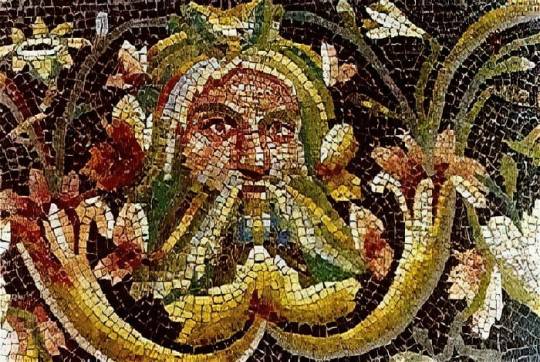
The Stunning Ancient Greek Mosaics of Zeugma
The ancient Greek mosaics of Zeugma in Turkey are true archaeological treasures that can still be admired at the Zeugma Mosaic Museum in Gaziantep, Turkey.
The 30,000-square-meter (320,000 square foot) museum, which opened its doors in September of 2011 is the largest mosaic museum in the world, containing 1,700 square meters (18,000 square feet) of ancient works of art.
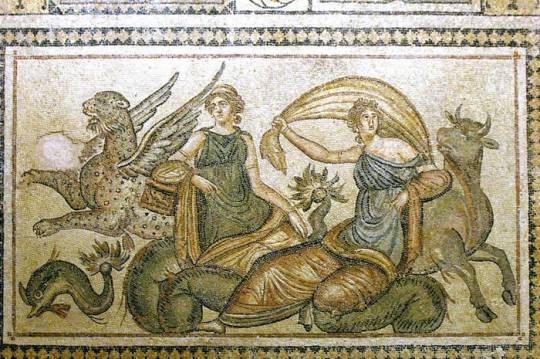
The museum focuses on the mosaics found in Zeugma, which was originally founded as Seleucia by Seleucus I Nicator, a general in Alexander the Great’s Army, in 305 BC.
After Alexander’s death, his generals divided his empire among themselves. Although Seleucus moved his main capital to Antioch, Seleucia became an important center of trade, Hellenistic culture, and regional government under the Seleucids.

The city was populated by Greeks, Syrians, and Jews. It was an affluent city with a population of eighty thousand and in the 2nd and 3rd century BC was of sufficient stature to be compared to another great center of Hellenism, Alexandria, in Egypt.
The Roman Empire’s forces conquered the city in 64 BC, renaming it Zeugma (meaning “bridge” or “crossing” in ancient Greek).
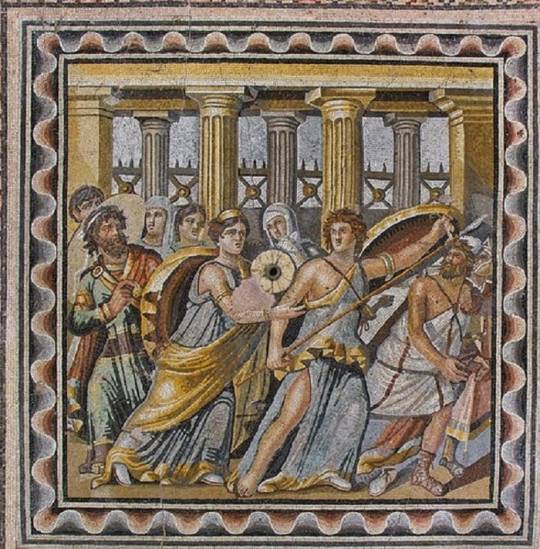
The Romans held Zeugma until 253 AD, when the Persian Sassanids conquered the city, putting a violent end to its most significant years.
The ancient Greek mosaics of Zeugma
The treasures of Zeugma, including its vaunted mosaics, remained relatively unknown until the year 2000. Zeugma is now eighty percent underwater after it was flooded with the waters of a nearby artificial lake.
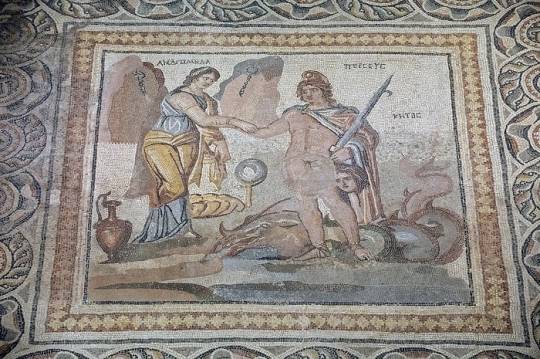
Archaeologists were alarmed at the flooding of the area and immediately began excavations to save the ancient treasures.
Most of the Greek mosaics of Zeugma, which were recovered in excellent condition, belong to the 2nd century BC preceding the Romans.

However, some of the mosaics appear to belong to the Roman era, as they depict Greek and Roman deities together.
In addition, some of the mosaics deviate from purely Hellenistic style and imagery, with archaeologists placing them in the Roman era of the city’s history.
The archaeological site of Zeugma
The archaeological site of Zeugma is a UNESCO World Heritage Center, located ten kilometers (six miles) away from Nizip within the boundaries of Gaziantep.
The preserved parts of the ancient city include the Hellenistic Agora, the Roman Agora, two sanctuaries, the stadium, the theater, two bathhouses, and the Roman legion military base.

Remains of the administrative structures of the Roman legion, the majority of the residential quarters, Hellenistic and Roman city walls, and the East, South and West necropolis can also be found there.
The archaeological site of Zeugma is of immense historical significance in the understanding of the ancient integration of Hellenistic and Semitic cultural spheres and the birth of syncretistic hybrid cultures in the region.
By Philip Chrysopoulos.
#The Stunning Ancient Greek Mosaics of Zeugma#Gaziantep Turkey#the largest mosaic museum in the world#Seleucus I Nicator#Alexander the Great#mosaic#ancient artifacts#archeology#archeolgst#history#history news#ancient history#ancient culture#ancient civilizations#roman history#greek history#greek art
146 notes
·
View notes